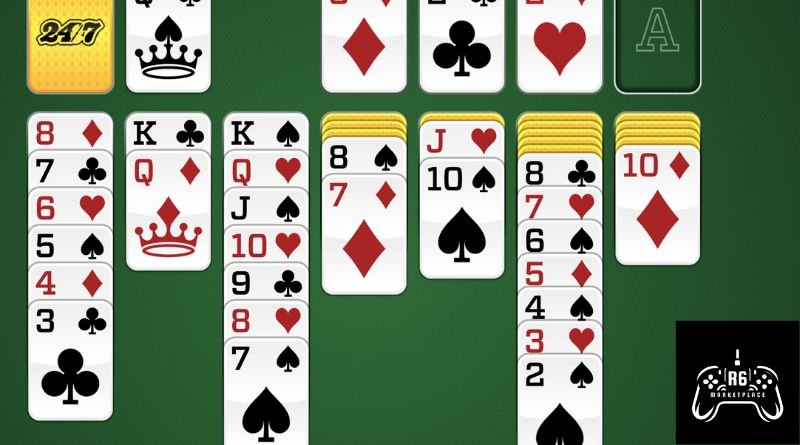Introduction: Understanding the Basics of Solitaire
Solitaire is a timeless card game that has entertained people for centuries. While it is often seen as a relaxing way to pass time, there is much more to it than just shuffling and playing. Whether you’re a beginner or an experienced player, Mastering Solitaire is a goal that can significantly improve your gameplay. The beauty of Solitaire lies in its simplicity, yet it is a game that requires strategic thinking, careful planning, and sharp focus to truly master.
In this article, we’ll explore the essential tips and strategies that will help you enhance your Solitaire skills. These tips will provide you with a structured approach to the game, which can increase your chances of winning while also making the game more enjoyable.
Understanding the Game Setup
Before diving into advanced strategies, it’s important to understand the fundamental setup of Solitaire. In most versions of Solitaire, such as the popular Klondike version, the game consists of seven piles of cards arranged on the table. The objective is to organize these cards into four foundation piles, each representing a suit, and the piles must be arranged in ascending order, starting with the Ace and ending with the King.
In addition to these piles, players typically have a stockpile from which they can draw cards. The cards are dealt face down, and only the top card of each pile is visible. This makes the game one of patience and strategy, as the player must carefully plan their moves.
Understanding how the setup works and the rules governing the game is the first step in Mastering Solitaire. Knowing when and how to use the available moves is key to winning the game.
Strategic Planning: Thinking Ahead
One of the most important aspects of Mastering Solitaire is the ability to think ahead. It’s easy to get caught up in the excitement of making moves quickly, but that often leads to mistakes. Instead, taking a more methodical approach will help you become a better player.
The first step is to examine the board thoroughly before making any move. Look for opportunities to uncover hidden cards. In most cases, uncovering a card from a face-down pile should be a priority, as it opens up new moves and possibilities. When you move cards, always consider the consequences of your actions. Will your move make it easier to get to other cards? Or will it block off future opportunities?
Thinking ahead and planning your moves will help you avoid dead-ends and set up opportunities for the long term. It’s essential to anticipate possible moves in advance and understand how each action will affect the overall layout of the game.
Managing the Stockpile Effectively
The stockpile is a crucial element in Mastering Solitaire. When you draw cards from the stockpile, you are often given a new perspective on the game, but how you manage it can make a big difference. Unlike the tableau, the stockpile is a hidden source of new cards that can either provide you with the exact card you need or frustrate your progress if not used correctly.
To maximize the benefit of the stockpile, avoid drawing from it too soon. Instead, first try to make moves using the cards already visible in the tableau. If there are no available moves or no clear path to proceed, then consider drawing from the stockpile. However, keep in mind that drawing from the stockpile too early could lead to wasted moves.
Additionally, some versions of Solitaire allow for a limited number of stockpile draws, so you must be strategic about when you use it. Prioritize moves that give you the most leverage on the tableau, helping you create more space and reveal more cards from the face-down piles.
Importance of Empty Tableau Columns
In Solitaire, empty tableau columns are an invaluable asset. These empty spaces allow you to place Kings, which can free up entire piles and make it much easier to move other cards around. Mastering Solitaire requires the strategic use of these empty columns, as they can dramatically improve your chances of success.
When trying to clear space in the tableau, always aim to free up a tableau column. This will allow you to move Kings around more freely and give you more flexibility in your play. Even if there are no immediate opportunities, clearing a column early can set you up for future moves.
However, it’s important to note that placing cards in these spaces is a delicate process. Only a King can be placed in an empty column, so be careful about the cards you move around to avoid blocking this space prematurely. Having a solid understanding of how to utilize empty columns will give you a distinct advantage when playing Solitaire.
The Role of Sequence Building
Sequence building is another key element in Mastering Solitaire. The game relies heavily on organizing cards into descending order of alternating colors. For example, a red 7 must be placed on a black 8, and so on. Understanding the order and color restrictions is essential when playing.
As you play, you should always be thinking about how to move cards in a way that builds long, unbroken sequences. The longer the sequence, the more cards you can move at once. This strategy will help you clear out the tableau and get closer to completing the game.
Be cautious about breaking sequences unless it’s absolutely necessary. Sometimes, breaking a sequence can lead to a more complex puzzle or even a dead-end. However, if doing so helps you reveal more cards or frees up a tableau column, it may be worth the risk.
Don’t Be Afraid to Undo Moves
One of the greatest advantages of modern Solitaire versions, especially digital ones, is the ability to undo moves. If you make a mistake or feel that a move was suboptimal, don’t hesitate to take it back and try something else.
Mastering Solitaire isn’t about making perfect moves every time. Sometimes, experimenting with different moves can lead you to discover the best strategy. Use the undo feature to test various scenarios, and over time, you’ll develop an intuition for the best moves to make in specific situations.
Keep Practicing to Improve Your Skill
As with any game, the more you practice Solitaire, the better you will become. Mastering Solitaire is a process that takes time and patience. While tips and strategies can help you make better decisions, the most important factor in improving your game is consistent practice.
Every time you play, challenge yourself to think more strategically, plan your moves in advance, and analyze the results. Over time, you’ll learn which strategies work best for you and how to deal with different situations.
Conclusion: Mastering Solitaire Takes Patience and Strategy
In conclusion, Mastering Solitaire is about more than just playing cards; it’s about developing a strategy, thinking ahead, and making each move count. By understanding the game’s structure, managing the stockpile effectively, and utilizing empty columns and sequence-building, you can dramatically improve your chances of winning.
Remember, success in Solitaire is not guaranteed, but by following these strategies, you can maximize your skill and increase your enjoyment of the game. With consistent practice and a strategic mindset, you can become a true Solitaire master.
May Also Read: r6marketplace

